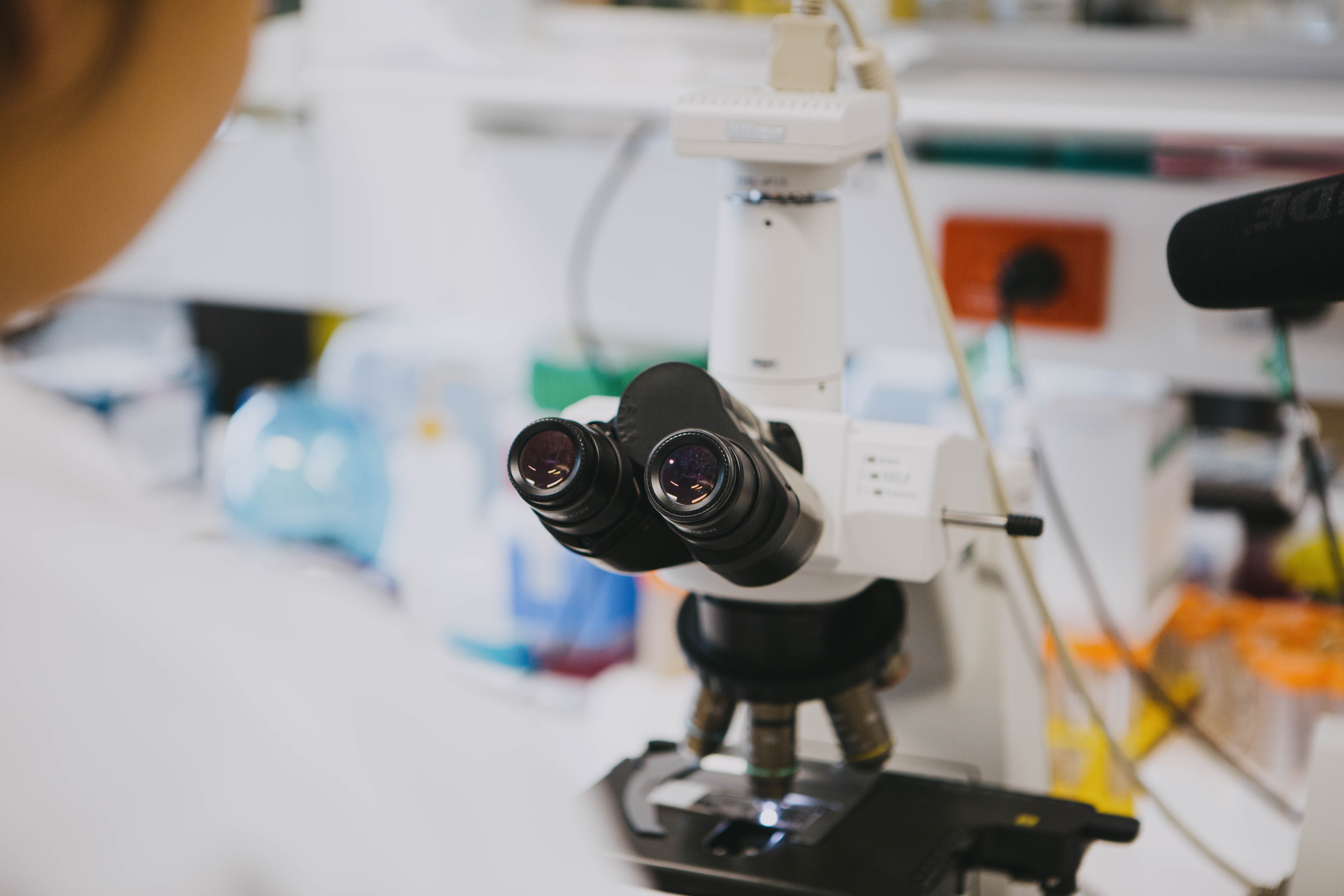[approx. reading time: 5 minutes]
Endometriosis and ovarian cancer are two distinct conditions and can significantly impact a person's quality of life.
Recent scientific studies have elucidated a probable causal link between endometriosis and some epithelial ovarian cancers. With varying overlaps in symptoms, origin and causes, there has been ongoing medical interest about the connection between them – whether having one increases the chance of developing another.
In this article we will explain what endometriosis and ovarian cancer are, their key differences, similarities and based on recent studies, how exactly these conditions could be linked and risk factors for one another.
Endometriosis vs. Ovarian Cancer: Key Differences and Similarities
What is Endometriosis?
Endometriosis is a common gynaecological disorder among women and people who menstruate. Defined as the presence of endometrial glands and tissue growth outside the endometrial lining and uterus, endometriosis commonly affects areas including the surface of the ovaries and the pelvic peritoneum [1].
These tissues are collectively known as endometriosis and, like the endometrial tissue lining the uterus, they respond to hormones released by the ovaries, causing bleeding. This leads to inflammation and scarring, which can cause painful ‘adhesions’ joining together pelvic organs which are normally separate [2].
What is ovarian cancer?
Ovarian cancer is a term for a group of diseases that originate in the ovaries, fallopian tubes or peritoneum. There are approximately thirty types of ovarian cancer, each with different characteristics such as cell of origin and genetic mutations, making it a complex disease to treat [3]. The major subtypes of ovarian cancer include epithelial, germ cell, sex-cord stromal and borderline ovarian cancer. The most commonly diagnosed ovarian cancers fall under the epithelial ovarian cancer subtype.
.png)
Image: Ovarian cancer (left) and endometriosis (right) cell biopsies under the microscope.
Similarities between endometriosis and ovarian cancer.
While endometriosis is considered a benign lesion (non-cancerous) and ovarian cancers can often be considered malignant and life-threatening, there are some shared characteristics between these conditions [1]:
Both conditions can affect female reproductive organs
Endometriosis and ovarian cancer both have the capacity to invade, spread to and damage distant tissues in the body
Both can result in infertility or subfertility
The direct cause and etiology for both illnesses is yet to be fully understood; however, certain risk factors have been identified
Symptoms like bloating, pelvic pressure or pain, nausea do overlap in both conditions [5]
Surgery via laparoscopy is currently considered the gold standard for diagnosis in both endometriosis and ovarian cancer
Cancer antigen marker 125 has been established as helpful in monitoring treatment of both diseases [4]
Differences between endometriosis and ovarian cancer
Despite there being suggested links between endometriosis and ovarian cancers and some similarities, they are both distinct, unique illnesses based on treatment methods, likely prognoses, mortality and more.
Frequency of endometriosis and ovarian cancer in Australia:
- Endometriosis affects one in 9 females or people assigned female at birth in Australia [6]
Prognosis for endometriosis and ovarian cancer:
- Endometriosis is considered a chronic illness that can vary in severity with the risk of resulting infertility; however, it is not lethal and is non-cancerous.
Treatment options for endometriosis and ovarian cancer:
- While no cure exists for endometriosis, it can be managed with surgical removal of lesions, removal of the uterus, pain-killer prescriptions, hormonal contraceptives and other hormonal treatments [2].
Treatment for ovarian cancer includes a combination of surgery to remove cancerous tissue, chemotherapy and radiotherapy. The administered course of treatment for ovarian cancer depends on the cancer type, stage and individual patient factors. [3] Ovarian cancer also has an approximate 80% recurrence rate and when it recurs, it is often resistant to available treatments which contributes to its lethality. (SOTN)
Research and funding into endometriosis and ovarian cancer in Australia:
In 2018 the Australian Government created the National Action Plan for Endometriosis, committing $87.19 million, specifically to:
Research – $28.97 million
Awareness and education – $8.57 million
Clinical management and care – $49.65 million, including $16.4 million for 20 endometriosis and pelvic pain GP clinics across Australia, providing multidisciplinary services and care for women with endometriosis and pelvic pain [6]
In 2020, the Australian government Medical Research Future Fund (MRFF) distributed $16.2 million to 8 ovarian cancer research projects in Australia
Between 2018-2022, the Australian government National Health and Medical Research Council (NHMRC) has distributed $24.5 million to ovarian cancer research in Australia
The OCRF is the biggest non-government funder of ovarian cancer research in Australia, contributing over $16 million to over 50 promising research projects
 Image 2: microscopic slides with ovarian cancer tumour cells
Image 2: microscopic slides with ovarian cancer tumour cells
Understanding the Link Between Endometriosis and Ovarian Cancer: Causes and Risks
Although endometriosis can occur in anyone who experiences menstrual periods, it is more commonly found in those who have[9]:
A family history (for example a mother who has endometriosis)
Shorter cycles (such as 27 days or fewer) or longer periods (over a week)
Never given birth to children
Researchers continue to explore [9] possible genetic, immune and hormonal areas of study to better understand what causes this condition. However, according to the World Health Organisation, there is currently no way to prevent endometriosis [8].
Similarly, there is no confirmed prevention approach for ovarian cancer. Some research suggests [6] that factors that reduce the risk of ovarian cancer can include use of the contraceptive pill, full-term pregnancy and breast feeding, or some gynaecological surgeries such as having the fallopian tubes tied. [7] Removal of the ovaries and fallopian tube removal can reduce ovarian cancer risk in high-risk populations, however the risk does not outweigh the benefit to the average individual.
Yet, these are not definitive prevention methods, only risk-reducing factors. To entirely understand the risk factors applicable to an individual, considering their entire health profile, it is essential to speak with a medical professional.
Factors considered to increase the risk of developing ovarian cancer can include [7]:
A family history of ovarian cancer
A family history of breast or colon cancer
Increased age
Hormone Replacement Therapy use
Obesity
Presence of BRCA1 or BRCA2 gene which are present in approximately 15% of ovarian cancer cases
Lynch Syndrome (or hereditary nonpolyposis colon cancer)
Conditions including endometriosis (for some ovarian cancer types only)
Research has also found a higher risk of endometrioid ovarian cancer for those with endometriosis. Endometrioid ovarian cancer is the second most common [12] epithelial ovarian cancer (following high grade and low-grade serous subtypes) and the risk factor is particularly heightened if the duration of endometriosis presence is over five years or the individual experiences endometriomas that are more than 8cm [13]. Additionally, endometriosis patients are considered to be at a higher risk of clear cell ovarian cancer; however, this is rare [14].
 Image 3: Ovarian cancer researcher at Hudson Institute of Medical Research
Image 3: Ovarian cancer researcher at Hudson Institute of Medical Research
A study of 800 patients in 2021 that monitored patients from 2010 to 2019 sought to understand the rate of any malignancy present in those with endometriosis.
Of the 800 patients, 104 also had a malignancy and of the 104, there were 50 cases of ovarian cancer, 33 of endometrial cancer, 14 cases of breast cancer, and 7 patients with both ovarian and endometrial cancer [13].
So, are endometriosis and ovarian cancer linked?
There’s enough research to suggest that some people who experience endometriosis may also be at a higher risk of developing some types of ovarian cancer, though there is still much unknown about both diseases.
More research into one disease may help us better understand the other and in time, provide more definitive answers and life-saving prevention methods.
Therefore, sustained funding into women’s reproductive conditions and diseases, such as endometriosis and ovarian cancer continues to be the only solution to advancing our knowledge of the biology of these conditions and the potential link between them.
LEARN MORE & GET INVOLVED
Read more about current OCRF-funded ovarian cancer research projects here.
To learn how you can be part of the solution, by becoming a regular OCRF giver as a member of The Lab, or by becoming an OCRF fundraiser, click here.
References:
[1] Worley, M. J., Welch, W. R., Berkowitz, R. S., & Ng, S. (2013). Endometriosis-Associated Ovarian Cancer: A Review of Pathogenesis. International Journal of Molecular Sciences, 14(3), 5367–5379. https://doi.org/10.3390/ijms14035367
[2] Endometriosis in Australia: prevalence and hospitalisations, Summary. (2019, August 29). Australian Institute of Health and Welfare. https://www.aihw.gov.au/reports/chronic-disease/endometriosis-prevalence-and-hospitalisations/summary
[3] About ovarian cancer. (n.d.). Ovarian Cancer Research Foundation. https://www.ocrf.com.au/ovarian-cancer/facts-about-ovarian-cancer
[4] Heidemann, L. N., Hartwell, D., Heidemann, C. H., & Jochumsen, K. M. (2013). The relation between endometriosis and ovarian cancer - a review. Acta Obstetricia Et Gynecologica Scandinavica, 93(1), 20–31. https://doi.org/10.1111/aogs.12255
[5] Geng, C. (2021, November 4). What is the connection between endometriosis and ovarian cancer? https://www.medicalnewstoday.com/articles/endometriosis-and-ovarian-cancer#:~:text=People%20with%20endometriosis%20can%20have,cancerous%20growths%20are%20not%20benign.
[6] Australian Government Department of Health and Aged Care. (2023, May 26). What we’re doing about endometriosis. https://www.health.gov.au/topics/chronic-conditions/what-were-doing-about-chronic-conditions/what-were-doing-about-endometriosis#about-endometriosis
[7]Australia, C. (n.d.). Ovarian cancer statistics in Australia. Cancer Australia. https://www.canceraustralia.gov.au/cancer-types/ovarian-cancer/statistics#:~:text=In%202020%2C%20there%20were%20944,by%20the%20age%20of%2085.&text=In%202020%2C%20the%20age%2Dstandardised,5.6%20deaths%20per%20100%2C000%20females
[8] World Health Organization: WHO & World Health Organization: WHO. (2023). Endometriosis. www.who.int. https://www.who.int/news-room/fact-sheets/detail/endometriosis
[9] Endometriosis | Office on Women’s Health. (n.d.). https://www.womenshealth.gov/a-z-topics/endometriosis
[10] Risch, H. A. (1998). Hormonal etiology of epithelial ovarian cancer, with a hypothesis concerning the role of androgens and progesterone. Journal of the National Cancer Institute, 90(23), 1774–1786. https://doi.org/10.1093/jnci/90.23.1774
[11] Australia, C. (n.d.-b). What are the risk factors for ovarian cancer? Cancer Australia. https://www.canceraustralia.gov.au/affected-cancer/cancer-types/ovarian-cancer/what-are-risk-factors-ovarian-cancer
[12] Epithelial ovarian cancer. (n.d.). Cancer Research UK. https://www.cancerresearchuk.org/about-cancer/ovarian-cancer/types/epithelial-ovarian-cancers/epithelial
[13] Dahiya, A., Sebastian, A., Thomas, A., George, R., Thomas, V., & Peedicayil, A. (2021). Endometriosis and malignancy: The intriguing relationship. International Journal of Gynaecology and Obstetrics, 155(1), 72–78. https://doi.org/10.1002/ijgo.1358
[14] Nezhat F, Datta S, Hanson V, Pejovic T, Nezhat C, Nezhat C. The relationship of endometriosis and ovarian malignancy: a review. Fertility and Sterility. 2008;90(5):1550-1570